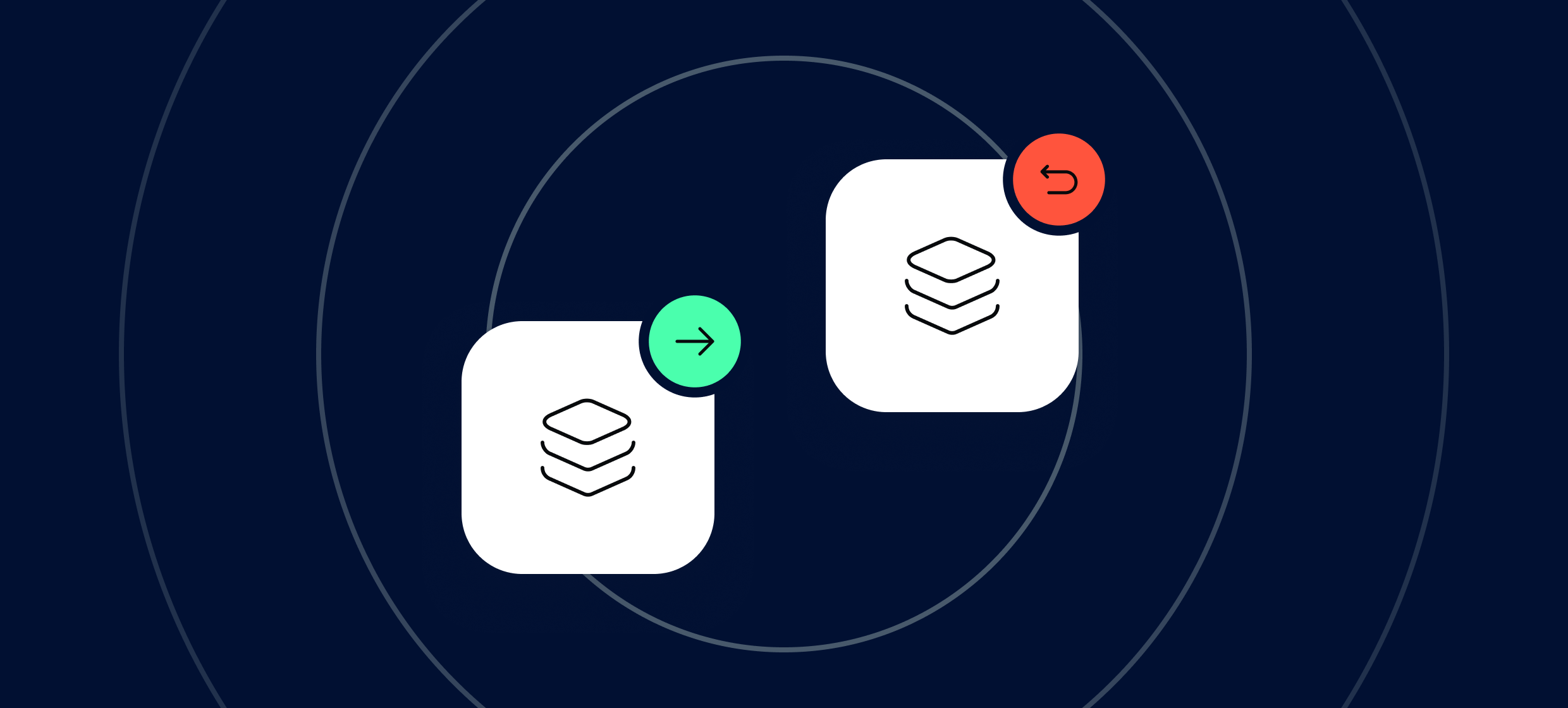The firewall vs proxy choice creates confusion for many people trying to secure their digital world. A firewall plays a crucial role in an organization's security setup by blocking various threats from entering a network. A proxy acts as a gateway between devices and internet servers that hides IP addresses and boosts privacy. Most services still rely on IPv4 proxies for broad compatibility across networks and applications.
These security tools work in different ways despite their shared goal of strengthening network security. Firewalls block unauthorized access and known threats, and proxy servers provide additional protection by working as intermediaries. Their technical capabilities also differ - firewalls use preset rules to analyze traffic flowing in and out, while proxy servers handle multiple internet protocols like HTTP, HTTPS, SOCKS, and FTP. In this piece, we'll break down proxy and firewall technology, explore their unique advantages, and guide you through choosing the right solution for your security requirements.
What is a Firewall and How Does It Work?
Firewalls act as digital gatekeepers that monitor network traffic and provide the first line of defense between secure internal networks and potentially dangerous external environments. Unlike proxy servers that mask identity, firewalls filter data packets based on predetermined security rules.
Firewall Definition and Purpose
A firewall creates a security barrier that checks incoming and outgoing network traffic. It allows legitimate communication while blocking malicious attempts. Firewalls have evolved from simple packet filters into sophisticated security solutions since the late 1980s. Their main goal remains the same: to create a protective boundary between trusted internal networks and untrusted external networks like the Internet. They also enforce network security policies by stopping unauthorized access and detecting suspicious activities.
Types of Firewalls: Packet Filtering, Stateful, NGFW
Packet Filtering Firewalls work at the network and transport layers. They check individual data packets based on criteria like source/destination IP addresses and port numbers. These simple firewalls work well for small networks with basic security needs.
Stateful Inspection Firewalls are a big step forward as they keep a state table to track active connections. They do more than just check packet headers. They analyze network traffic context, which makes them more effective against sophisticated threats. These firewalls are perfect for medium-sized networks that need better security.
Next-Generation Firewalls (NGFWs) came around 2010. They combine traditional features with advanced capabilities such as:
- Deep packet inspection
- Application-level filtering
- Intrusion prevention systems
- Advanced threat detection
NGFWs can spot specific applications like Skype or Facebook, which gives detailed control over network traffic. Organizations that need complete protection against complex threats find them especially valuable.
Firewall OSI Layer: Network and Transport
Traditional firewalls usually work at Layer 3 (network) and Layer 4 (transport). Packet filtering firewalls mainly operate at Layer 3 to check network addresses. NGFWs can work across multiple layers up to Layer 7 (application). This lets them look at content within data packets instead of just header information.
Common Use Cases for Firewalls
Firewalls protect against many threats, from backdoors and DoS attacks to remote login exploits, spam, and viruses. Popular uses include:
- Security enforcement in large enterprises
- Home network protection through router-integrated firewalls
- Cloud environment and data center security
- Meeting regulatory compliance requirements (GDPR, HIPAA, PCI DSS)
- Filtering based on IP addresses, ports, protocols, and time-based rules
Firewalls also provide key protection against malware by checking emails and stopping connections to malicious websites.
What is a Proxy Server and What Does It Do?
Proxy servers act as gatekeepers between your devices and the internet and add a significant layer to network security architecture. Unlike firewalls that filter traffic, proxies serve as intermediaries that forward requests on your behalf.
Proxy Server Definition and Function
A proxy server works as an intermediary system between clients and web servers to process and forward requests to their destination. Your browsing requests go through the proxy first, which retrieves the resource and sends it back to you. This separation creates a buffer that hides your identity while making performance and security better. The proxy takes your place in network requests to ensure safer connections by providing extra protection.
Types of Proxies: Forward vs Reverse
Forward proxies manage outbound traffic between local servers and the external internet. These proxies handle user requests and mask IP addresses while serving as a single entry point for network administration. Reverse proxies accept client requests in front of web servers and forward them to appropriate backend servers without showing the server's identity. This setup works great for load balancing, content caching, and backend server protection.
Proxy OSI Layer: Application Layer
Proxy servers typically run at Layer 7 (application layer) of the OSI model. This position lets them work with specific application protocols instead of just network packets. The application-layer operation helps proxies understand and filter HTTP requests, something lower-layer devices can't do.
Benefits: Anonymity, Caching, Geo-bypass
Proxy servers' main benefits include better privacy through IP masking, optimized bandwidth with content caching, and access to geo-restricted content. Proxies make it harder for websites and advertisers to track your online activities by hiding your real IP address. The servers also store frequently accessed resources to reduce bandwidth usage and improve load times for future requests. This caching creates a "local copy of the Internet" and minimizes repeated data fetching.
Firewall vs Proxy Server: Key Technical Differences
Firewalls and proxy servers complement each other in security functions but work with fundamental technical differences that affect network protection. A clear understanding of these differences helps choose the right solution for specific security needs.
Traffic Filtering: IP Packets vs Application Requests
Firewalls and proxies differ mainly in their filtering approaches. We filtered IP packets through firewalls based on preset rules that analyze data packet origins and destinations. They work at layers 3 (network) and 4 (transport) of the OSI model and check packet headers for suspicious IP addresses. Proxy servers work differently at layer 7 (application layer). They receive information from target websites and forward it to clients while hiding their actual network identity. This higher-level operation lets proxies understand and filter specific application protocols like HTTP, HTTPS, and FTP.
Protocol Support: Protocol-Agnostic vs Protocol-Specific
Firewalls stay protocol-agnostic and check traffic whatever the application or protocol. This feature allows inspection of most network traffic crossing the boundary. Proxy servers take a different approach as protocol-specific tools that handle common application protocols. Traditional proxy implementations support less than 20 protocols and focus on HTTP, HTTPS, and FTP—which make up most internet traffic. This specialized approach enables deeper application-level analysis but limits protection scope.
Security Focus: Threat Blocking vs Identity Masking
Firewalls focus on defensive security by blocking unwanted and malicious traffic from private networks. They assess traffic based on security policies and often deny inbound connections by default. Proxy servers take a different path and emphasize privacy protection by using their own IP addresses instead of clients' actual addresses. This anonymization makes it harder for websites and potential attackers to track user activities. Firewalls excel at stopping threats, while proxies shine at hiding identities.
Performance Impact: Caching vs Real-time Inspection
Proxy servers offer performance benefits through content caching. They store copies of frequently accessed resources to reduce bandwidth usage and speed up response times for future requests. Firewalls that perform deep packet inspection might slow things down due to real-time traffic analysis. This performance gap exists because proxies can terminate connections and optimize traffic, while firewalls must check every packet that passes through.
When to Use a Firewall, Proxy, or Both Together
The choice between a firewall, proxy server, or both comes down to your security needs. Each tool brings unique benefits that protect different parts of your network.
Standalone Use Cases for Firewalls
Firewalls serve as your network's first line of defense. They work best for companies that need to control traffic flow based on security rules. These tools block unauthorized access to networks and stop threats like Trojan horses from damaging your resources. On top of that, they reduce the risk of keylogging attacks that try to steal credentials. A packet filtering firewall uses access control lists (ACLs) to filter data packets. This makes it perfect for monitoring and encrypting traffic. Companies that worry most about external threats should start with a firewall before looking at other security options.
Standalone Use Cases for Proxies
Proxy servers excel at providing anonymity, content filtering, and better performance. Users who want to hide their IP addresses from attackers find them essential. Yes, it is worth noting that Google tracks 76% of all online traffic, while Amazon (17%), Facebook (16%), and Microsoft (8%) follow behind. Proxies help mask this tracking activity. They also let you access geo-restricted content by using IP addresses from allowed locations. These tools are a great way to get past IP-based limits during web scraping. They also help with SEO monitoring when you need to check search results from different places. The fact that only 0.63% of users check Google's second page makes SEO monitoring crucial for businesses.
Combined Use: Layered Security Approach
Using both technologies creates a powerful defense system that works better than each tool alone. Firewalls usually guard network boundaries and filter out bad traffic, while proxies add deeper application-layer protection. This setup allows for better access control—firewalls handle network/transport layer data as proxies take care of application layer information. The combination helps organizations fight complex threats that single security tools don't deal very well with.
Enterprise Integration: NGFWs with Proxy Capabilities
Next-Generation Firewalls (NGFWs) with built-in proxy features offer the best solution for enterprise environments. These hybrid setups let organizations keep stateful packet inspection while fine-tuning their traffic control. You don't need to find one firewall that does everything—instead, you can mix and match tools that work well together. NGFWs combine traditional firewall features like stateful inspection with advanced capabilities such as intrusion prevention systems and application awareness. Hybrid setups are flexible enough to let you assign specific firewalls to different threats, like using one firewall just to stop data theft.
Conclusion
Your specific security needs will determine whether you should use a firewall, proxy, or both. Firewalls are great at stopping threats. They work at the network and transport layers to filter traffic based on predefined rules. These tools are the foundations of defense against unauthorized access and malicious attacks. Proxies excel at hiding identities and work at the application layer. This makes them perfect for anonymity, content filtering, and better performance through caching.
A closer look at both technologies shows they tackle different parts of network security. Firewalls stop threats from getting into networks, and proxy servers hide user identities while controlling outbound traffic. This key difference explains why many organizations use both solutions instead of picking just one.
Small networks with simple security needs might do fine with just a firewall. Users who care mostly about staying anonymous might stick to proxy servers alone. But security threats keep getting smarter, which shows why using both tools makes sense. These tools work together to create a complete security system. Firewalls block known threats at the network edge while proxies add extra filtering and anonymity at the application level.
Enterprise environments might find next-generation firewalls with built-in proxy features to be the most resilient solution. This setup gives you both packet inspection and detailed application control in one system. On top of that, it lets security teams customize protection for specific threats.
This comparison shows that firewalls and proxies aren't rivals but partners that handle different security jobs. Instead of choosing between them, think about how they can work together to boost your security. The real question isn't which one you need - it's how to best use both to meet your security goals.
FAQs
What are the main differences between a firewall and a proxy server?
Firewalls primarily focus on threat prevention by filtering network traffic based on predefined rules, while proxy servers emphasize privacy protection by masking user identities and handling application-level requests. Firewalls operate at the network and transport layers, whereas proxies function at the application layer.
Are firewalls becoming obsolete?
No, firewalls are not becoming obsolete. Instead, they are evolving to become more dynamic and integrated with application-level security. Modern firewalls, especially Next-Generation Firewalls (NGFWs), are adapting to address increasingly sophisticated security threats.
Can proxy servers be used for legitimate purposes?
Yes, proxy servers have many legitimate applications. Companies use them to control access to certain websites, improve security, save bandwidth, and perform tasks like web scraping and SEO monitoring. They also help in accessing geo-restricted content and enhancing online privacy.
Should I use a firewall, a proxy, or both for my network security?
The choice depends on your specific security needs. For comprehensive protection, using both is often recommended. Firewalls provide essential threat prevention at the network level, while proxies offer additional privacy and content filtering capabilities. For enterprise environments, Next-Generation Firewalls with integrated proxy capabilities can offer a robust, all-in-one solution.
How do firewalls and proxy servers impact network performance?
Firewalls may introduce some latency due to real-time traffic inspection, especially when performing deep packet inspection. Proxy servers, on the other hand, can often improve performance through content caching, reducing bandwidth usage and improving response times for frequently accessed resources.
FAQs
What is Proxy-Cheap?
Proxy-Cheap is a proxy service provider for online anonymity and security.
What type of proxy solutions does Proxy-Cheap offer?
Proxy-Cheap offers residential, datacenter proxy solutions, and mobile proxy.
What IP versions does Proxy-Cheap support?
Proxy-Cheap supports IPv4 and IPv6 proxy versions.
What are the targeting options for our proxies?
Proxy-Cheap offers targeting options for specific countries.
What proxy connection protocols are supported?
Proxy-Cheap supports HTTP, HTTPS, and SOCKS proxy connection protocols.
Can I renew expired proxies?
Yes, you can renew expired proxies with Proxy-Cheap.
Can I choose proxy server locations?
Proxy-Cheap allows you to choose proxy server locations.
How easy is it to set up and manage proxies from Proxy Cheap?
Setting up and managing proxies with Proxy-Cheap is user-friendly.
How many concurrent sessions (threads) can be used?
The number of concurrent sessions varies based on your plan.
What are proxy authentication methods?
Proxy-Cheap offers various proxy authentication methods for user security.




















.svg)